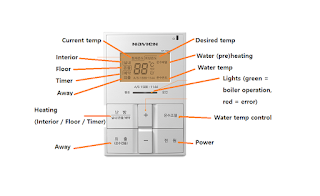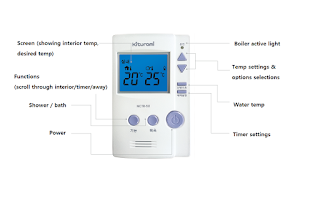How to Use Korea’s Floor Heating and Hot Water System in Korea
- FLip Korea
- Sep 18
- 3 min read
Learn how Ondol (온돌), Korea’s unique underfloor heating system, works and how to use it. Step-by-step boiler instructions, common error fixes, gas-saving tips, and practical advice for foreigners in Korea.
What is Ondol (온돌)?
Ondol (온돌) literally means “warm stone” and refers to Korea’s traditional underfloor heating system. For centuries, Koreans used wood smoke channeled under thick stone floors to heat homes.
Today, the modern version of Ondol is the standard heating method in almost every Korean house and apartment.
Instead of radiators or central air ducts like in Western countries, Korean homes use hot water pipes installed under the floor, powered by a gas boiler. This system efficiently heats the entire room from the ground up, keeping the floor pleasantly warm during cold winters.
Fun fact: Even in modern skyscrapers, Koreans still prefer Ondol over space heaters or radiators because it’s efficient and feels cozy.
How Ondol Works
A boiler (보일러) heats water using gas (sometimes electricity).
Hot water circulates through pipes under the floor, warming up rooms evenly.
A wall controller (thermostat/온도조절기) lets you set hot water temperature, floor heating levels, and schedules.
Gas pipes for the boiler are separate from gas lines for your stove.
Most Korean homes have four main pipes: two for floor heating, one for hot water supply (bathroom/kitchen), and one for cold water input.

Using a Korean Floor Heating & Hot Water System
If you’re new to Korea, the wall controller can look intimidating since most buttons are in Korean. Luckily, once you know the basics, all brands work similarly.

Common Buttons & Terms
(Korean → English):
전원 (Power): On / Off
온수 (Hot Water): Hot water for showering & bathing
난방 (Heating): Floor heating
외출 (Out / Away mode): Keeps the system at low temperature while you’re out
예약 (Schedule): Timer for boiler start/stop
저 / 중 / 고: Low / Medium / High
Rinnai Boiler (린나이 보일러) – Examples
Here are simplified instructions for the most common types of controllers:

Type 1
전원 (Power): On/Off (reset if needed)
온도 (Temperature): Adjust water/floor heating
온수 (Hot Water): Select water temp: Low (저) / Medium (중) / High (고)
난방 (Heating): Spin dial to adjust heating
외출 (Out): Energy-saving mode when away

Type 2
현재 (Current Temp): Shows current underfloor temp
온수 (Hot Water): On/Off
난방 (Heating): On/Off
절약 (Eco mode): Limits floor heating to 25°C
올림/내림 (Up/Down): Adjust values

Type 3
온수 전용: Hot water only (summer)
난방 온수: Both hot water + floor heating (winter)
외출: Low heating mode
온수 온도 조절: Adjust hot water temp

Type 4
온수 (Hot Water): Supply hot water
난방 (Heating): Activate floor heating
연소 (LED): Lights up when boiler is burning gas
Other examples of pictures with English translation from 10원 Tip
Tips to Reduce Your Gas Bill in Korea
Gas bills can be surprisingly high in winter. Here’s how to save money:
Use 외출 (Out mode) instead of turning the boiler off.
Don’t set the temperature too high: 20–23°C is enough.
Insulate windows with bubble wrap or plastic film.
Use an electric mat for your bed (전기장판).
Turn taps back to cold water after use (prevents boiler from auto-starting).
Take shorter showers.
Troubleshooting Common Problems
1. No hot water / No heating
Check wall controller settings.
Look for error codes and search them online.
Ensure the boiler’s power plug is connected.
Make sure gas valve is open.
2. Cold water only
Check if the cold water valve is open.
In winter, water pipes may freeze, defrost carefully with a dryer or pour warm (not boiling) water on pipes.
3. No water at all
Ask neighbors/landlord if it’s a building issue.
If freezing is the cause, insulate water meter area.
How to Prevent Pipes from Freezing in Winter
Never fully turn off your boiler when leaving. Set to 외출.
Wrap exposed pipes with insulation foam.
At night, let a small stream of water drip from the faucet.
Ondol (온돌) is one of Korea’s most unique cultural and practical features. It keeps homes warm in winter, provides consistent hot water, and is more energy-efficient than electric heaters. While Korean boiler controllers can look confusing at first, once you understand the buttons, staying warm becomes simple.
Whether you’re renting an apartment in Seoul or staying in a guesthouse, learning how to use Ondol will make your Korean winter much more comfortable.










